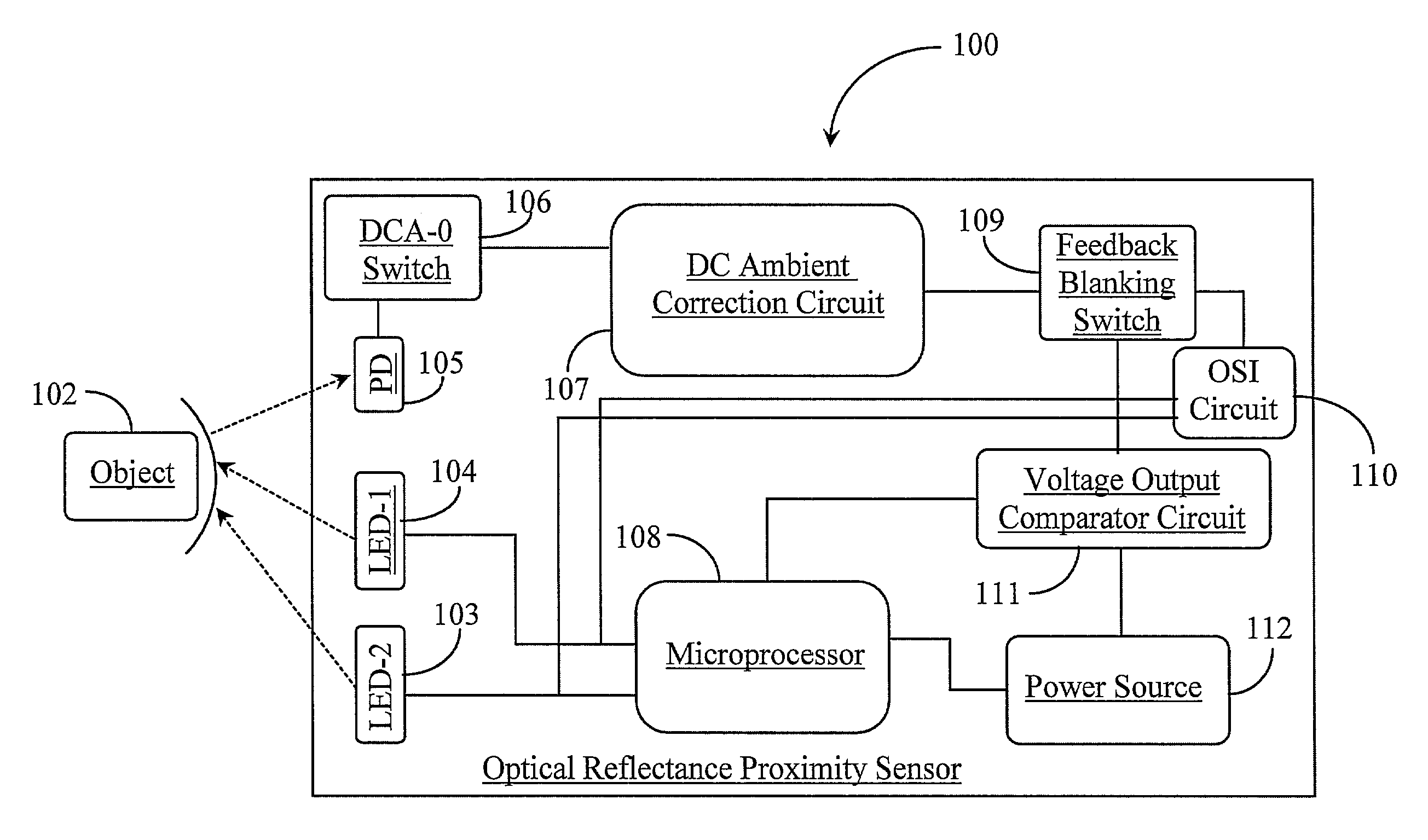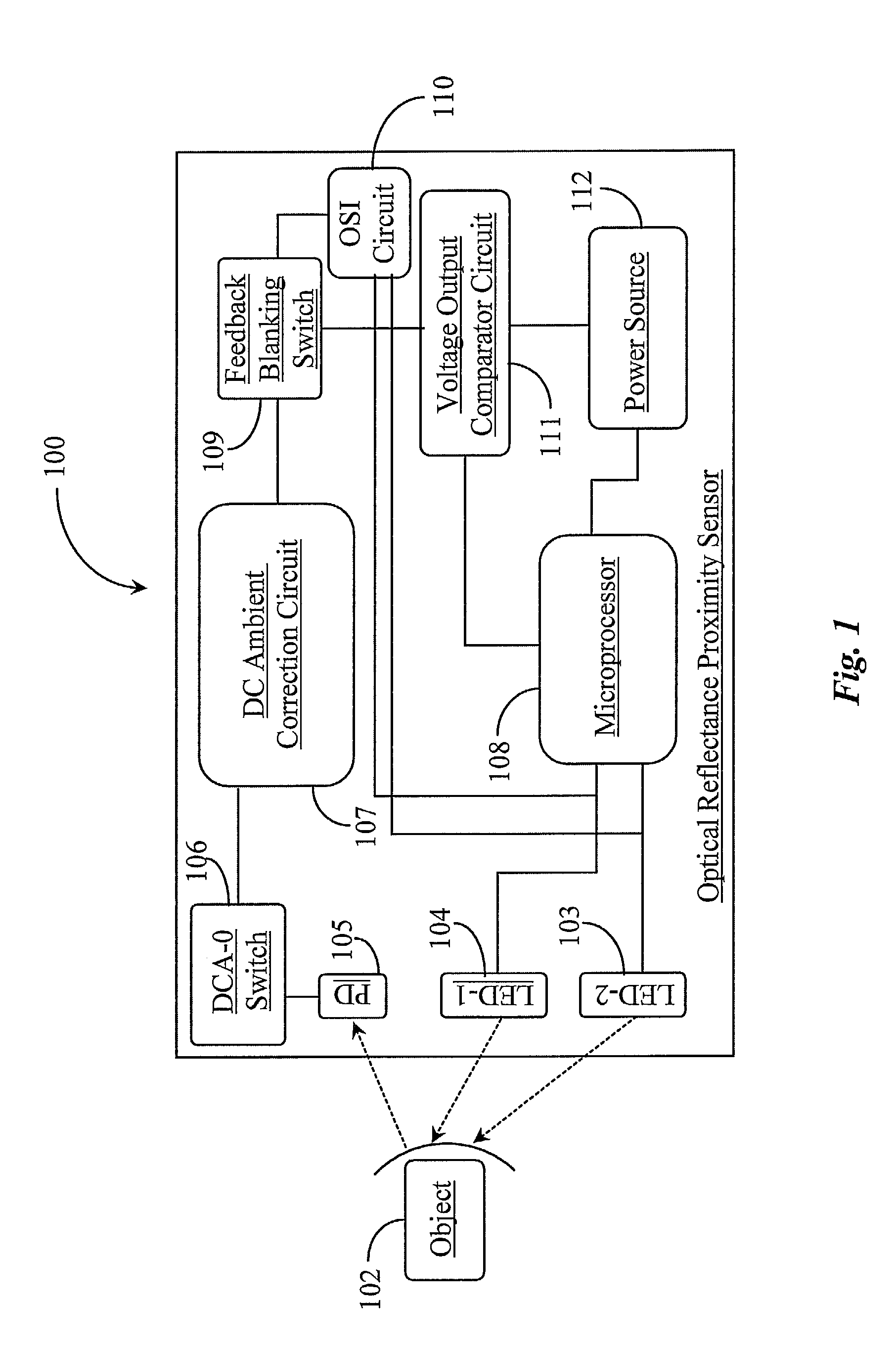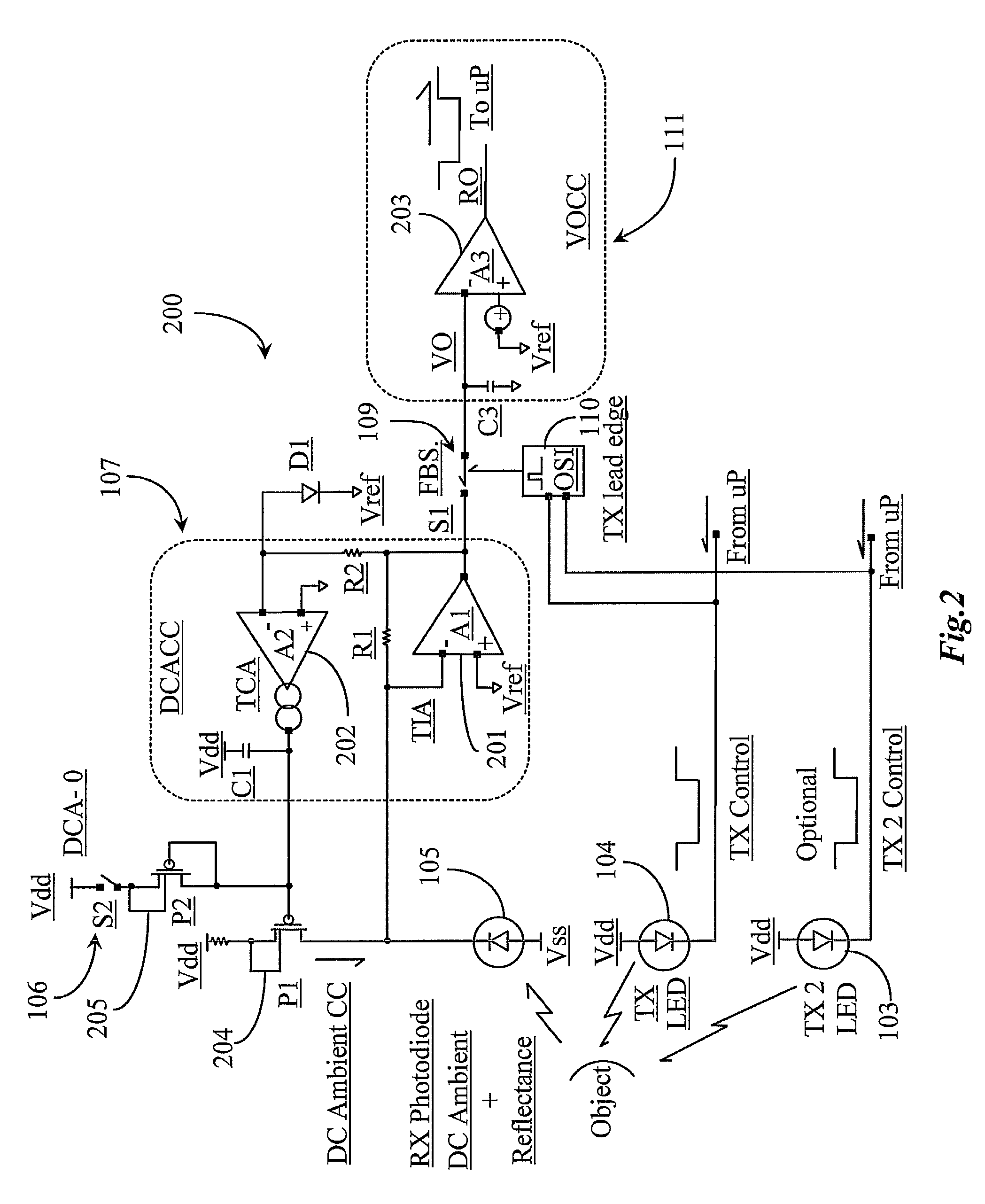Optical reflectance proximity sensor
a technology of optical reflectance and proximity sensor, which is applied in the field of optical reflectance proximity sensor and improved reflectance sensor, can solve the problems of high power consumption, large volume, and large active reflectance sensor, and achieve the effect of improving the accuracy of optical reflectance sensor
- Summary
- Abstract
- Description
- Claims
- Application Information
AI Technical Summary
Benefits of technology
Problems solved by technology
Method used
Image
Examples
Embodiment Construction
[0057]The inventors provide an improved active optical reflectance proximity sensor architecture that may include a first-order, wide-loop DC ambient correction circuit that along with an optional feedback-immunity circuit among other added functions to achieve very high reflectance sensitivity in the presence of large DC and other ambient noises. The sensor is enabled using an economically viable architecture allowing for sensor implementation in the form of very low power on-off proximity sensors and more sophisticated analog-output proximity sensors that can be easily interfaced to microprocessors, or may stand alone, in some applications, to facilitate a wide range of proximity applications. The invention is described in detail in the various embodiments presented herein.
[0058]FIG. 1 is a block diagram of an optical reflectance proximity sensor 100 according to an embodiment of the present invention. Proximity sensor 100 is configured as an “active” optical reflectance proximity...
PUM
 Login to View More
Login to View More Abstract
Description
Claims
Application Information
 Login to View More
Login to View More - R&D
- Intellectual Property
- Life Sciences
- Materials
- Tech Scout
- Unparalleled Data Quality
- Higher Quality Content
- 60% Fewer Hallucinations
Browse by: Latest US Patents, China's latest patents, Technical Efficacy Thesaurus, Application Domain, Technology Topic, Popular Technical Reports.
© 2025 PatSnap. All rights reserved.Legal|Privacy policy|Modern Slavery Act Transparency Statement|Sitemap|About US| Contact US: help@patsnap.com



